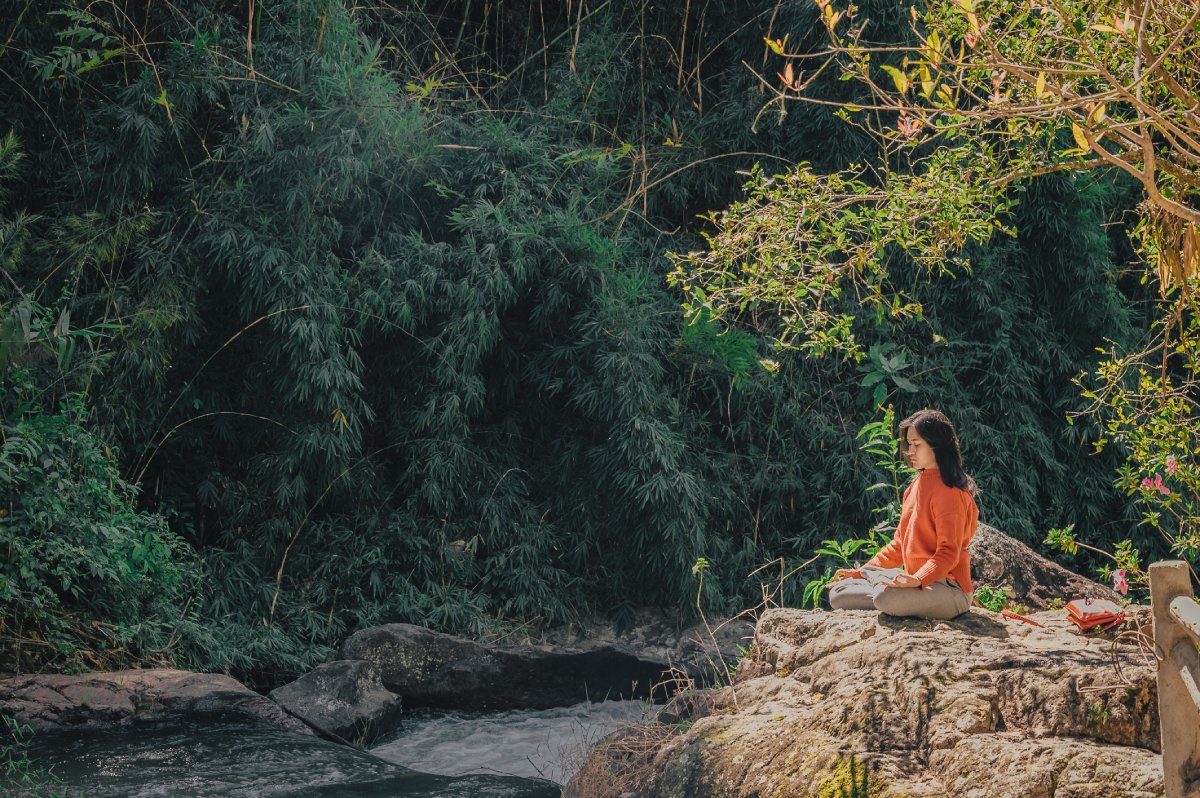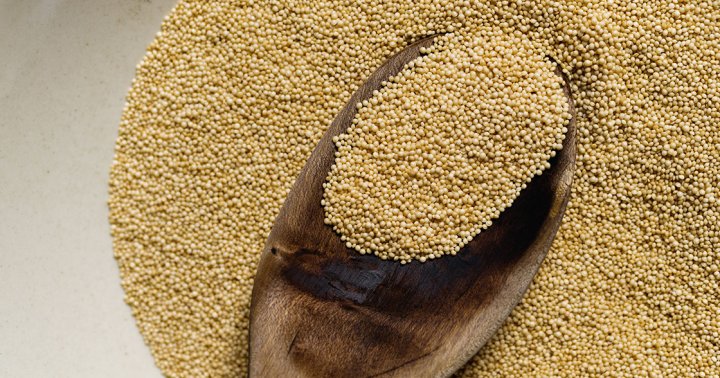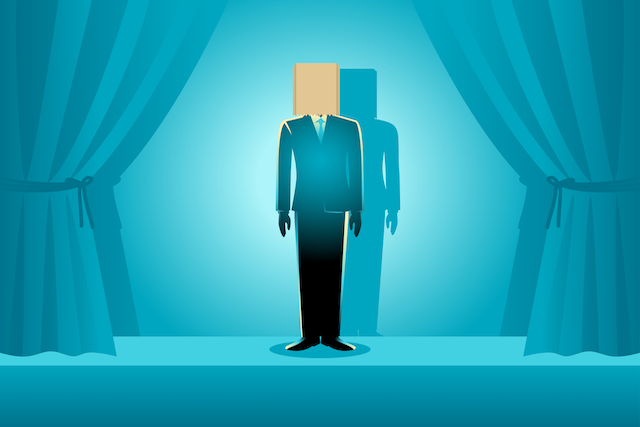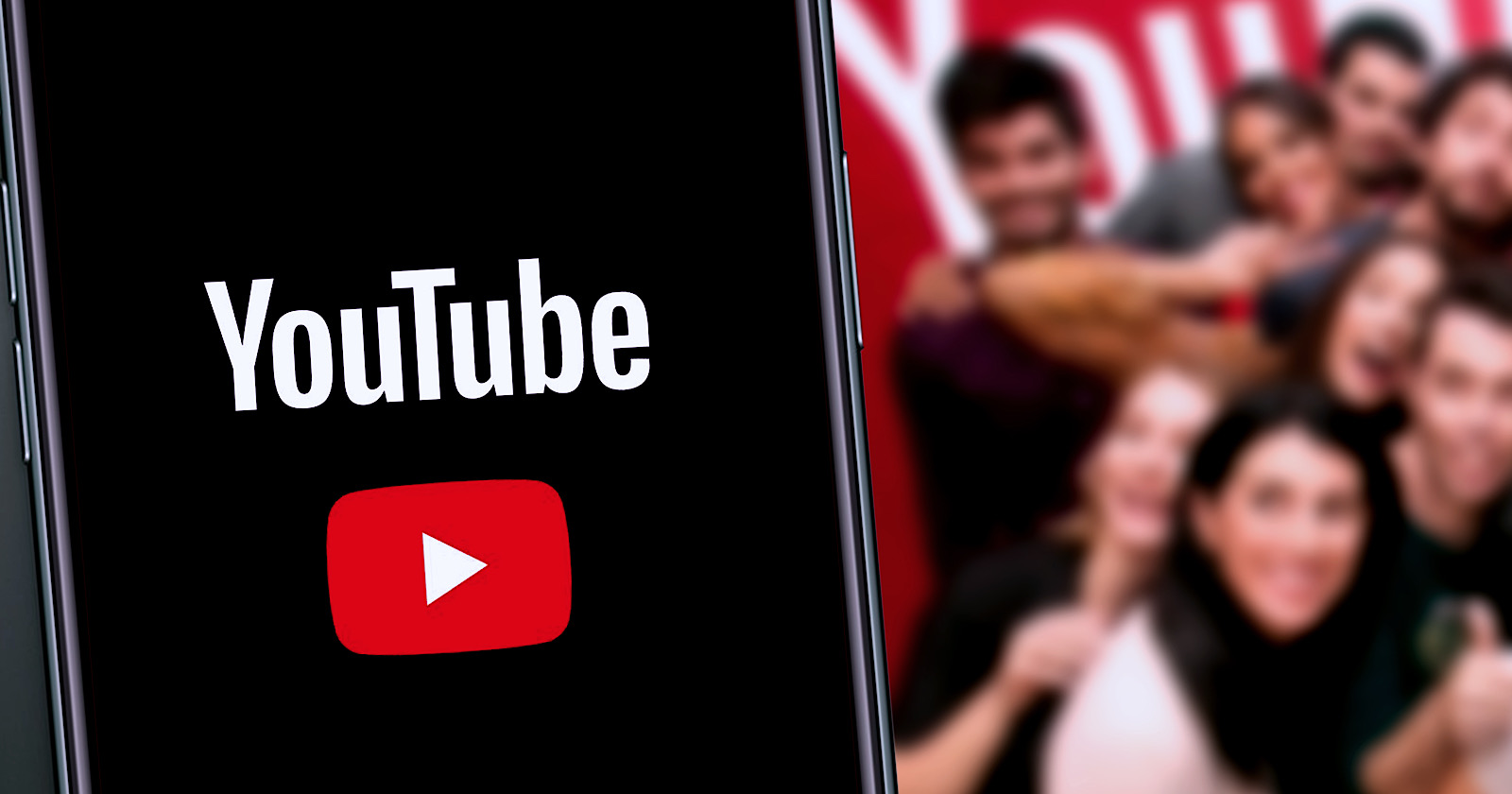Sincerity of Practice
How the ritual of note-taking helped one Zen student to embrace the ineffable. The post Sincerity of Practice appeared first on Tricycle: The Buddhist Review.
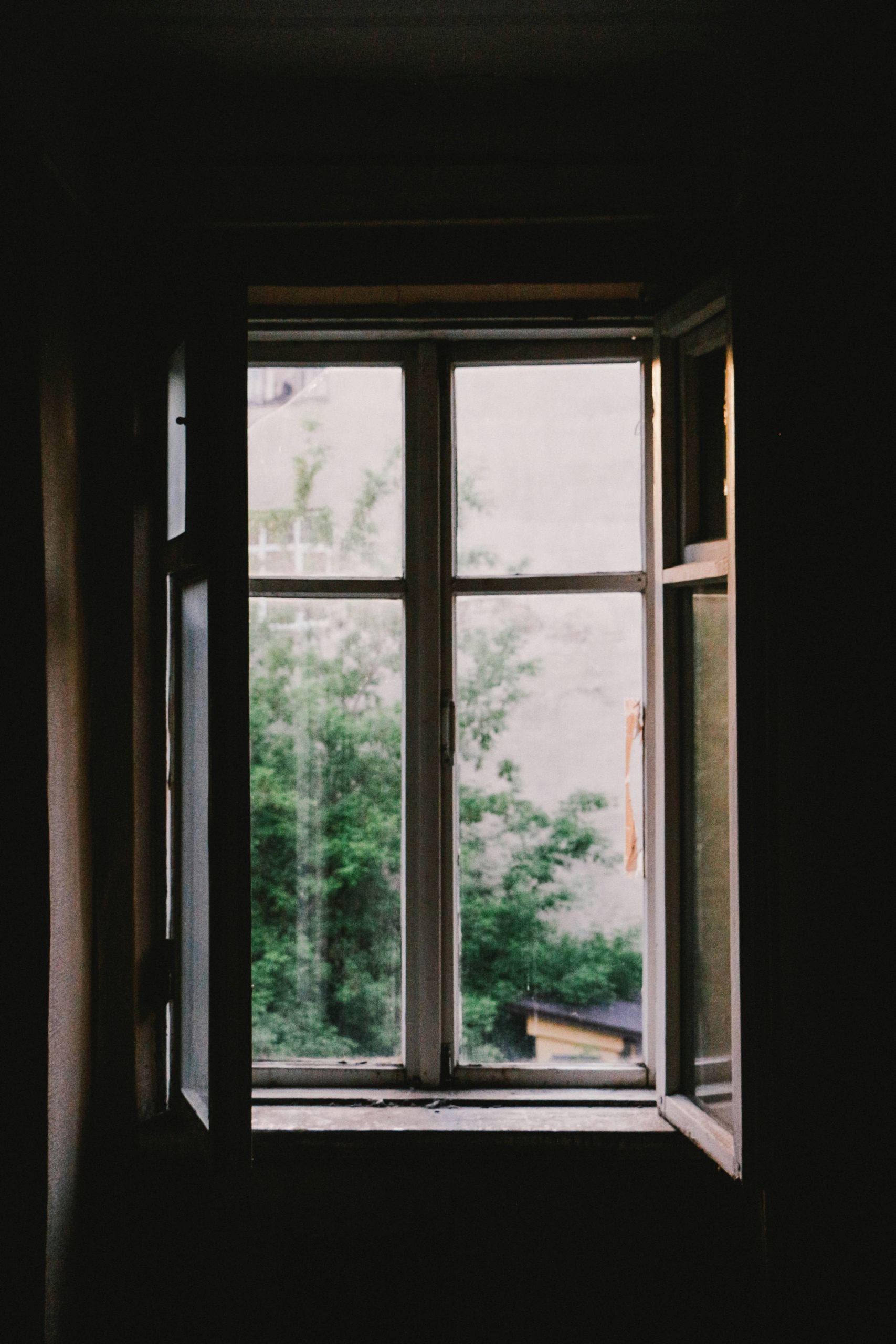
When I first began to jot down on sticky notes the different ideas that I wanted to contemplate every day, I had hoped to challenge myself to incorporate new understandings into my practice. I took to heart the fact that my practice was meant to include everything, including seemingly mundane tasks such as cooking, cleaning, and earning a living, but between dharma talks, actual practice, reading books, and keeping my nose to the grindstone, there were gulfs in my contemplative discipline.
And so, in an effort to direct my thoughts toward dharmic ways of seeing, I began to stick Post-it notes on my 12″ x 16″ bathroom mirror. While I had never been in the habit of looking at myself in the mirror first thing in the morning, the idea was that the neon yellow and bright pink—both colors I’ve never liked very much—of the Post-its would catch my eye and draw me to the words I wanted to consider right before I let my mind take over for the remainder of the day.
I got the idea about the stickies from a non-Buddhist friend of many years, a poet and librarian who has the largest bathroom vanity I’ve ever seen. The three-panel mirror that encases the three-section medicine cabinet holds, at any one time, at least a dozen notes—reminders, to-do checklists, and sometimes a line or two from a poem he’s still drafting.
In the morning, my gaze is usually turned inward. Having my face reflected back at me first thing in the day is inconceivable; I am often still just remembering that I’ve landed back into my physical form from the reveries of sleep. So when I first took up my sticky note habit, I did what I always did in the morning when I brushed my teeth and washed my face—I never looked up.
“The way to study Zen is not verbal,” Shunryu Suzuki Roshi wrote in his book Not Always So. “Just open yourself and give up everything.” I’d read this and thought I had understood it, but I’m a writer and have pretty much always been a writer. I’ll box with words till I get to the place of no words—of silent understanding—only to begin again, to box with my shadow and finally “just open.”
In Vasubandhu’s “Three Natures”: A Practitioner’s Guide for Liberation, author Ben Connelly writes about William James, the “Father of American psychology,” who researched religious experiences from around the world to help inform his work. James found that people’s accounts of these divine experiences had a consistent theme: ineffability. In Connelly’s words, “People said their deep spiritual experiences were beyond words, and yet they spoke.” Most days, that would be me.
“The dualities inherent in language,” Connelly reminds us in his book, “are wondrous and they are incomplete.”
During the confinement that came with the first COVID stay-at-home order, I would come in and out of the bathroom during my workday and the stickies would invariably catch my eye. In time, they began to have an impact.
Sometimes, while I was working or cooking, I’d try to remember a thought or idea that I’d been focusing on—say, “I begin to feel comfortable with my own authority”—and I’d intentionally go “look it up” in the mirror and even try to recall the intention behind it (which wasn’t always clear), and, in the process, also pause from the habit of moving unconsciously. These rotating invitations toward contemplation (visiting with a thought, idea, principle, or small truth) would become one of the most important parts of my practice throughout the pandemic. Some of the sticky notes were questions: “What strategies do I have for when I feel unable to move?” “When grief shows up for me and I feel possessed by it, what can I do to not dissociate?” As a Latina over 50 living alone during the pandemic with systemic lupus erythematosus and fibromyalgia, I’d sometimes feel a frozen-in-place kind of stuckness on days when the going got tough. And as a survivor, that sense of paralysis itself could be triggering.
Other notes were invitations to reframe my thinking. For example, borrowing the words “I get to …” and scribbling them over “I have to …” On the days when my experience of physical pain was high and I still had to go about the basic activities of daily living, this minor shift in perspective made the difference between moving and getting things done and the alternative of not moving and not getting anything done.
I’d started with as many as three or four related sticky notes that I kept up at the same time for two weeks or so. I’d replace each one, or do away with them altogether, when I felt I’d begun folding an idea or principle or concept into my thinking, into how I approached my daily tasks, myself, or in interactions with others.
After a few weeks into this experiment, I came upon words that would be stuck to my mirror for months—“Definiteness of Purpose”—and soon, all the other notes began to fall away without replacements.
How do I define definiteness? Clear as an arrow? Unerringly toward? Except for when it came to social justice, I don’t think I’d ever truly known a sense of definiteness.
And so “Definiteness of Purpose” stayed up for a while. It got under my skin. Contemplating it brought up regret. What had, really, been my purpose all along? The unifying purpose of the many odd twists and turns of a small and not so singular life? And what was my “Definiteness of Purpose” now? What could it be going forward?
Despite the feelings the note brought up, I didn’t turn to aversion, which I would’ve been quick to do in the past. I stayed with my unresolved emotions. There was a kind of definiteness in staying, a growing, an anchoring clarity in my body.
The stickies then got whittled down into a single note that’s been up now for the past year or so—“Sincerity of Practice.” It seemed like a natural focus to come next, and somehow more concrete, more actionable.
At first I wasn’t sure why I’d made the note. What did “Sincerity of Practice” mean anyway? Where had I first read this or seen it or heard about it? Didn’t it mean to make an honest attempt to practice? Was it about “right effort?” And didn’t I already think that I was trying? I already had a daily sitting practice. I tried to live by the precepts as best I could, to cause the least amount of suffering possible. And to be present, which trying to live by the precepts seemed to help. What else was there?
One day, sometime later, the app that I had been using to clock my over 50,000 hours of meditation got some kind of a bug and quit on me. I wrote the app’s team in a panic. It soon became clear that no one was going to get it to work, and I thought, “Wait. What? Am I afraid I’ll forget to do it? Or is it my meditation history and, therefore, an identity, that I’m really afraid of losing?”
So I intentionally skipped meditating the next morning and tried to be with the sense of discomfort that this new situation brought. It felt awful. I felt apprehensive, as though something terrible would befall me, but I stayed with that feeling.
In time, I returned to my daily practice, for the same reason that I’d begun it. It simply made sense. Meditation had a palpable impact on my life. I knew that I wasn’t always aware of that impact, but I was quickly and unequivocally aware of its absence when I stopped meditating.
I live on the ambulance path of the MedStar Washington Hospital Center in Washington, D.C., and it was my meditation habit meltdown that helped me to become more aware of the underlying grief I felt every time I heard a siren. Unconsciously, every ambulance siren had functioned like a living, auditory reminder of other people’s suffering. I’d always had a tendency to rage against suffering instead of trying to accept it, and there were so very many sirens. Sirens of all kinds. Sirens at all hours. The sounds began to represent the idea of my defenselessness to suffering.
Trying to make peace with this defenselessness and my own compounded grief, it occurred to me to start bowing every time I heard a siren. To lower my head and upper torso in the direction of the sound as though it were the most sacred thing in the world. To stop, wherever I was, no matter what I was doing, and lean into it. This was my version of acceptance, the only type of surrender I felt I could do. I held the strangers being carried away and the strangers doing the carrying in the light of my heart’s attention. In their direction, I sent off a message of goodwill, telling them “I am with you in this moment.”
I found myself taking many bows in the kitchen because that’s where I often was when I heard the sirens early on in the pandemic. Once the worst stages were over and the sirens began to come at a lower frequency, I often found myself bowing to an empty, silent kitchen. “What’s the purpose of this?” I’d think. “Who bows to their kitchen?” I didn’t know why, but I knew that I needed to.
A practice that I had created to make my experience of others’ suffering more bearable became a way of expressing gratitude and awe. It remains one of the nighttime rituals for closing out the day that I look forward to most. Now, I also bow to my food before I sit down to eat, bowing to the cook, who is eating alone, as well as to all of the other interconnected parties who helped the food get to my table.
Before first establishing my meditation practice, I had a strong aversion to bowing. The thought of it would trigger anger and resentment. As a young immigrant from Puerto Rico who was trying to grapple with prejudice and sexism at school and work while learning a new language in the late 1970s, I remember vowing to bow to no one. I would starve and suffer pain instead. I remember my rage. I never thought that I’d find myself writing about the merits of bowing in any way.
Bowing now feels like an extension of who I am—one of my greatest expressions, like smiling when I feel good or seeing something beautiful. And it is healing to bow, even to silence itself. Bowing encapsulates, in many ways, the idea of “Sincerity of Practice” for me.
Bowing now feels like an extension of who I am—one of my greatest expressions, like smiling when I feel good or seeing something beautiful.
I pass a window on my way out to the kitchen from the bathroom. No sirens, no ambulances. It’s now been three winters since the pandemic began. An incense offering burns at my kitchen altar, where a small Buddha statue holds a sprig of lavender. In a circle around the statue, I’ve set red coral, azurite, tiger’s eye, gifts of crow and owl feathers, and a silver statue of a naked woman bowing.
Sincerity.
I look at the note today, as I have for the past year, and hold it in the light of my attention. It’s such a vast thing. So all-encompassing and irreducible. Considering it helps me examine a thousand things a day that are “ineffable.”
As Shunryu Suzuki Roshi wrote:
“The way to study Zen is not verbal.
Just open yourself and give up everything.
Whatever happens, study closely and see what you find out.
This is the fundamental attitude.”

 Troov
Troov 








